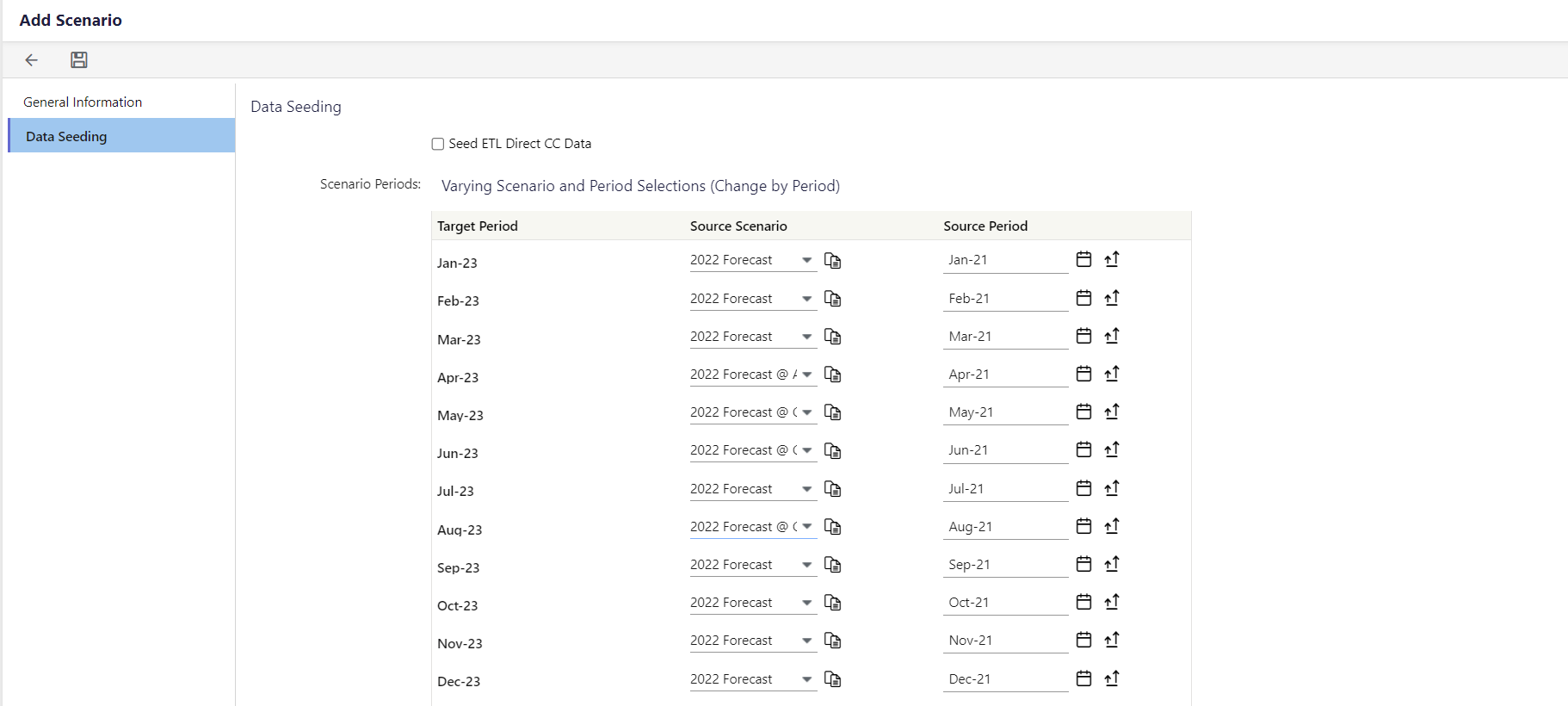- 2 Minutes to read
- Print
- DarkLight
- PDF
Creating a Preloaded Budget Scenario
- 2 Minutes to read
- Print
- DarkLight
- PDF
The preloaded budget scenario is used in the following use cases:
- To load budget/forecast data created outside of Planful into the system for reporting purposes.
- To generate forecasts based on historical data using Predict Projections
- To do flux analysis like budgets/forecasts at actual or different rates.
- To reference data from different scenarios in Planful and carry analysis with or without changing exchange rates.
Navigating to Add Scenario Page:
- Navigate to Maintenance > Admin > Scenario Setup.
- Click the Add button to open the Add Scenario page.
- In the General Information section, select Preloaded Budget from the Scenario Type drop-down list.

Let’s see how the above use cases can be achieved on the Add Scenario page:
- Loading data into Planful via DLRs
- Load with Predict Scenario
- Load with Source scenario
To create a Preloaded Budget scenario to store budgets/ forecasts done external to Planful, follow the steps below,
- Select the Fiscal Year for which the preloaded budget is being created. By default, the current fiscal year is displayed.
- Enter a Scenario Code.
- (Optional) Enter a Scenario Name.
- Click Save.

To load Data Via DLRs, see DLR.
The ‘Predict Scenario’ feature incorporates AI projections into your scenario, prefilling the template automatically with these AI projections. This facilitates data-driven planning by establishing a reliable baseline for decision-making.
To enable Predict Scenario, a minimum of 3 years of historical data for Signals and Projections is required. If there are more than 3 years of historical data, the respective year can be chosen in the General Settings column by navigating to Maintenance > Admin > Configuration Tasks > Planful: Predict.
Utilizing the historical data available, it generates the Predict data for all the intersections available for the chosen period. To pre-populate a template with AI projections, perform the following steps.
- Check the Predict Scenario check box; this will prefill the Scenario Code with a prefix of Predict_Scenario_. You can then add a meaningful suffix to identify the scenario.
.png)
- Select the Fiscal Year for which the preloaded budget is being created. By default, the current fiscal year is displayed.
- (Optional) Enter a Scenario Name.
- Click Save.
You can then use this scenario during the data seeding of other scenarios to pre-populate templates with AI projections. Also, you can use the preloaded Predict scenario in Dynamic Reports for further analysis.
Using this preloaded Predict Scenario, you can fill budget and forecast scenarios with AI Projections.
To learn more about Predict Projections, see Predict Projections.
Users can choose data from a Source Scenario to the Preloaded Budget Scenario. The Preloaded Budget Scenario can be seeded with data from different source scenarios and source periods.
Enabling the Seed ETL Direct CC Data ensures that data is seeded in its original form from the source scenario. By default, this feature is disabled, and in such cases, the system automatically performs currency conversions for the loaded data, i.e., if the user loads data in local currency, it will be automatically converted to the common currency based on the provided exchange rates.To create a Preloaded Budget scenario with Source Scenario, follow the steps below.
- Select the Fiscal Year for which the preloaded budget is being created. By default, the current fiscal year is displayed.
- Enter a Scenario Code.
- (Optional) Enter a Scenario Name.
- Go to the Data Seeding tab.
- Enable Seed ETL Direct CC Data, if necessary.
- Select the Source Scenario and Source Period in the Scenario Periods section.

- Click Save.

